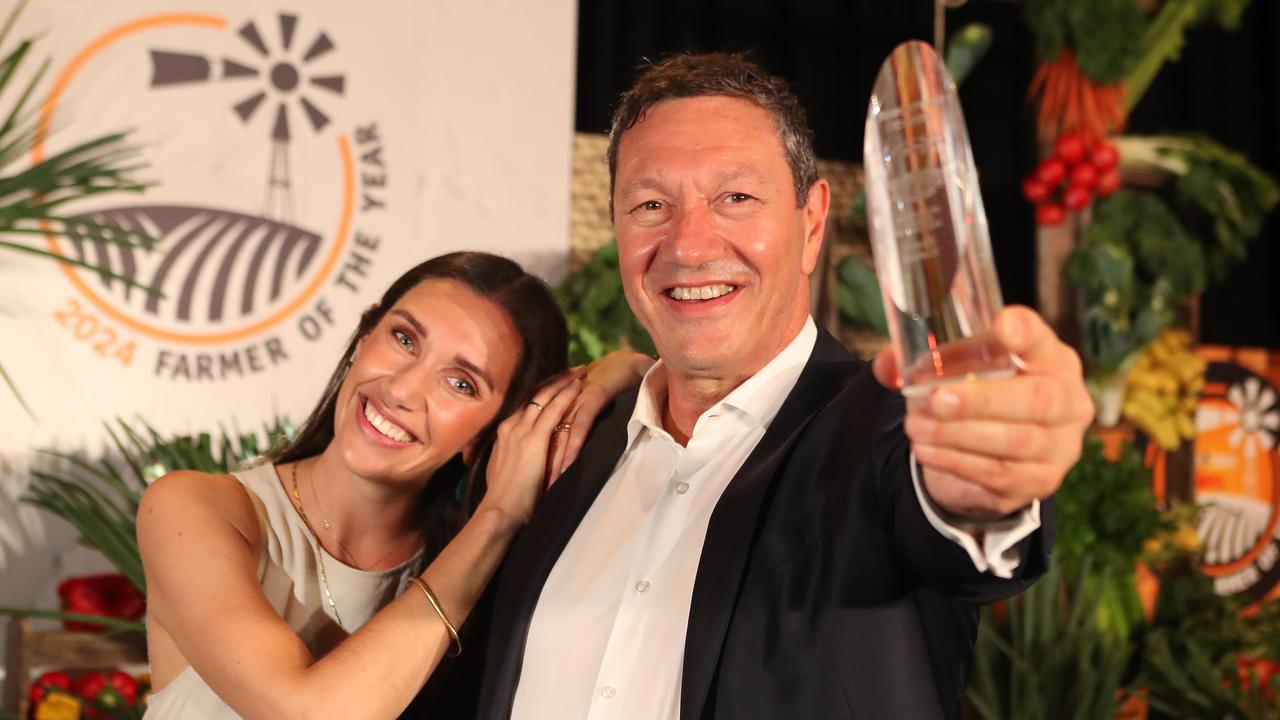Dookie farmer David Cook looks outside the square
DAVID Cook looks outside the square to overcome the lack of water.

ANY crop at any time. That’s a simple take on David Cook’s philosophy for his farm at Dookie in northern Victoria.
But it is the basic assessment of a responsive system that takes advantage of soil moisture when it is there.
David crops about 1100ha of dryland country, 150ha of which is made up of old irrigation blocks.
And while he lost his water when Lake Mokoan was decommissioned, he’s taken a fresh look at the way the farm is run.
David’s farming enterprises are now centred totally around cropping, but don’t for a minute think it is the traditional wheat and canola mix.
Faba beans, safflower, millet and seed sorghum, along with wheat and canola, are all part of the range of crops that David ensures are planted according to available soil moisture.
Grain sorghum will be planted for the first time this year in an attempt to get a high residue summer cereal into the rotation.
And this year was a classic example of how the rotations are juggled.
One paddock was too wet to sow wheat, and the sowing window was missed.
Rather than let that paddock stand fallow for another year, David sowed safflower. That safflower will be harvested in January.
It has already been sold for close to $500 a tonne, and it has benefited and will continue to benefit from any rain that falls throughout late spring and early summer.

WET THE APPETITE
BEING able to take advantage of this soil moisture is one of the platforms of David’s business.
The other is to boost soil carbon.
David recently took up a Nuffield Scholarship to study cover crop and nutrient-uptake efficiency and he is working on his final report now.
What he saw in Europe, Canada, the US and Argentina was farmers’ willingness to move away from the traditional rotations.
“We have all sorts of reasons to move away from this, including and probably most importantly, weed resistance,” David said.
“It just opened my eyes to the kinds of things we could do, to vary our rotations which could boost soil carbon and then lift the ability of the soils to hold water.”
David’s farm is on duplex soils, with the topsoil good, but covering impervious clays.
He has recognised that to make a difference in soil water-holding capacity, he needs to lift the organic carbon levels in his soil. It’s part of a four-step plan, or ladder, that started with no-till farming.
“No-till farming is good, and no-till farming with stubble retention is better,” he said.
“But the next stage is no till with stubble retention and opportunistic crops including cover crops. And the final stage is all of these, plus livestock.”

EWE TURN
DAVID’S sheep flock may have been sold off in 2007, but that was by no means a final decision.
“If there was a need to reintroduce them, I would. That decision is being reconsidered in the light of my Nuffield travels,” he said.
David said many farmers were at the first stage and some were at the second.
His travels highlighted the importance of cover crops sown, which would be sacrificed for the benefit of building soil organic levels and using different root structures of plants to penetrate subsoils.
“The best cover crops were mixes of different crop types, mixes of warm-season and cool-season grass and broadleaf species, including cereals, clovers, sunflowers, vetch, brassicas, daikon radish, millet and buckwheat,” he said.
“I don’t think we can make any great impacts on soil carbon levels by just following our wheat-canola rotations, even with no till. Sowing a break crop, or even a summer crop between two winter crops, cannot only give you a break crop but also add to the soil.”

BUCKING THE TREND
DAVID acknowledges that some people might think he is optimistic growing summer crops in 450-500mm rainfall country.
But he has analysed 130 years of rainfall data collected at nearby Dookie College, which has shown him that with the shift of rain from winter dominant to increases in spring and summer, summer crops such as safflower and millet can be grown successfully when the opportunity arises.
And the reasons for trying a different set of crops and a different rotation pattern are not only valid but essential, David said, to make his country sing.
“We like to produce five tonnes/ha or bigger wheat crops so it’s not like we don’t want to produce good traditional crops,” he said. “But it is about taking advantage of the soil moisture when it is there.
“It’s also about boosting organic carbon levels, and avoiding problems with weed resistance.”
David said another example of his change of thinking was in 2010, when floodwaters ruined chickpea crops.
“Rather than bemoan the fact, we looked at the soil moisture and thought what could we do with it,” he said.
“We planted millet on the back of all the rain over harvest and we produced 3t/ha of shirohie millet, which gave us a gross margin of $1300/ha.
“Yes, we could have saved that moisture for growing a wheat crop, but we still planted a wheat crop in that paddock the next year and got 3t/ha of wheat. The overall gross margin was terrific and reinforced what we were doing was valid.”

READY TO GO
DAVID said his seeder, a New Zealand-built Cross Slot No Till, was always hooked up to the tractor ready to sow, regardless of the time of year.
“I think like a Queenslander now, I sow when there is moisture,” he said. “It spreads our risk. The floating rotation mix cleans up resistant rye-grass, it spreads the workload and any cover crops we plant will lift organic carbon levels. So instead of trying to get all our crops in during a four-week sowing period, we sow the crop that is right when the moisture is there.”


